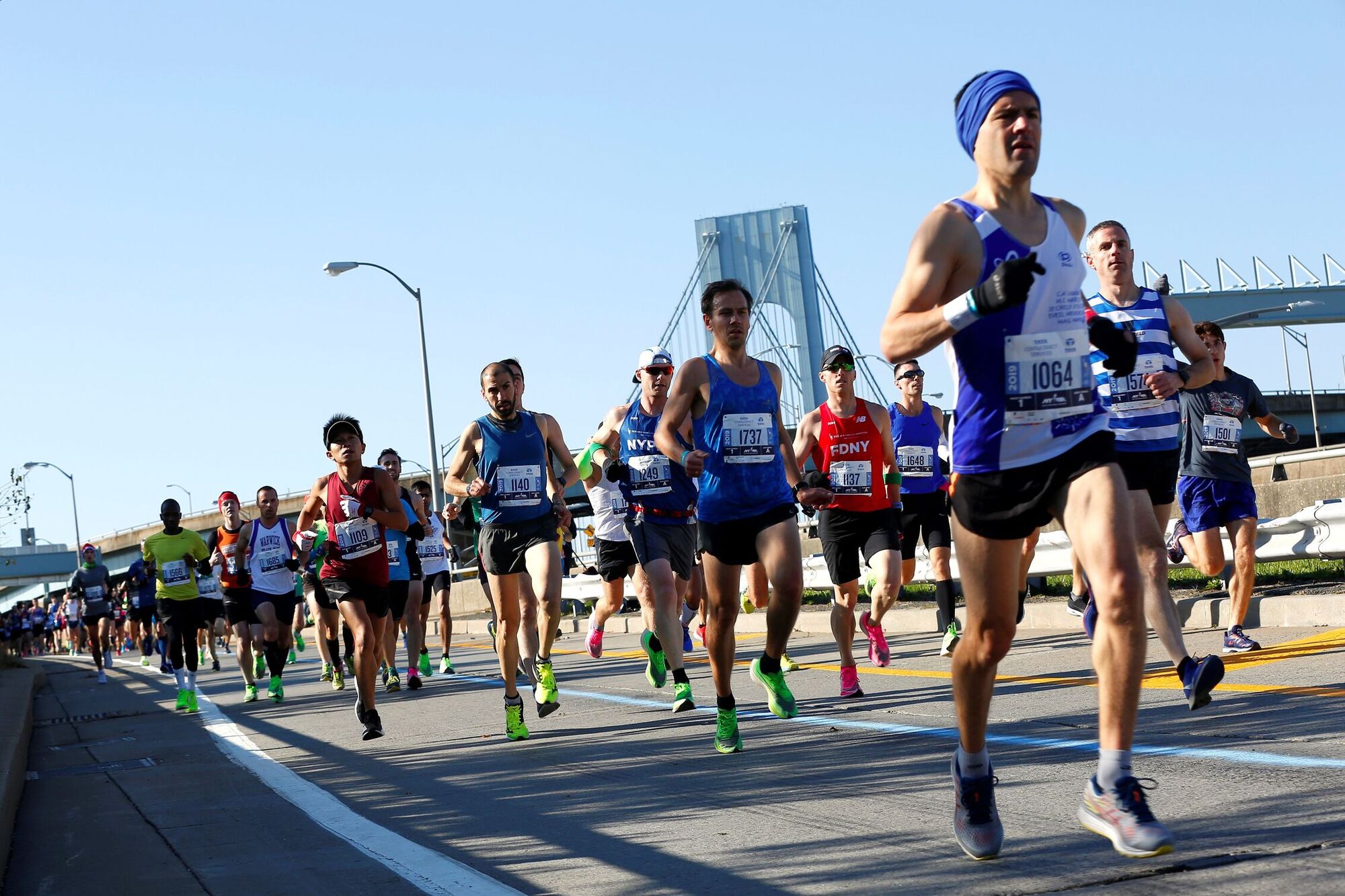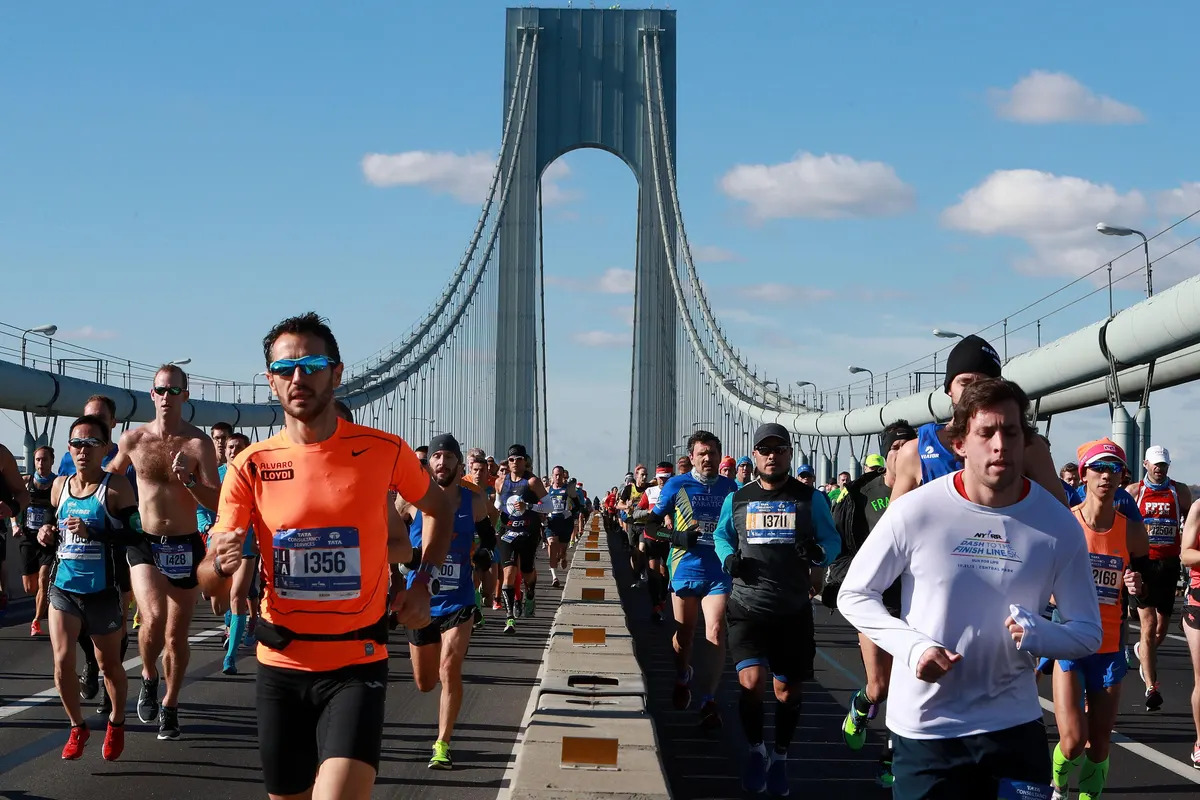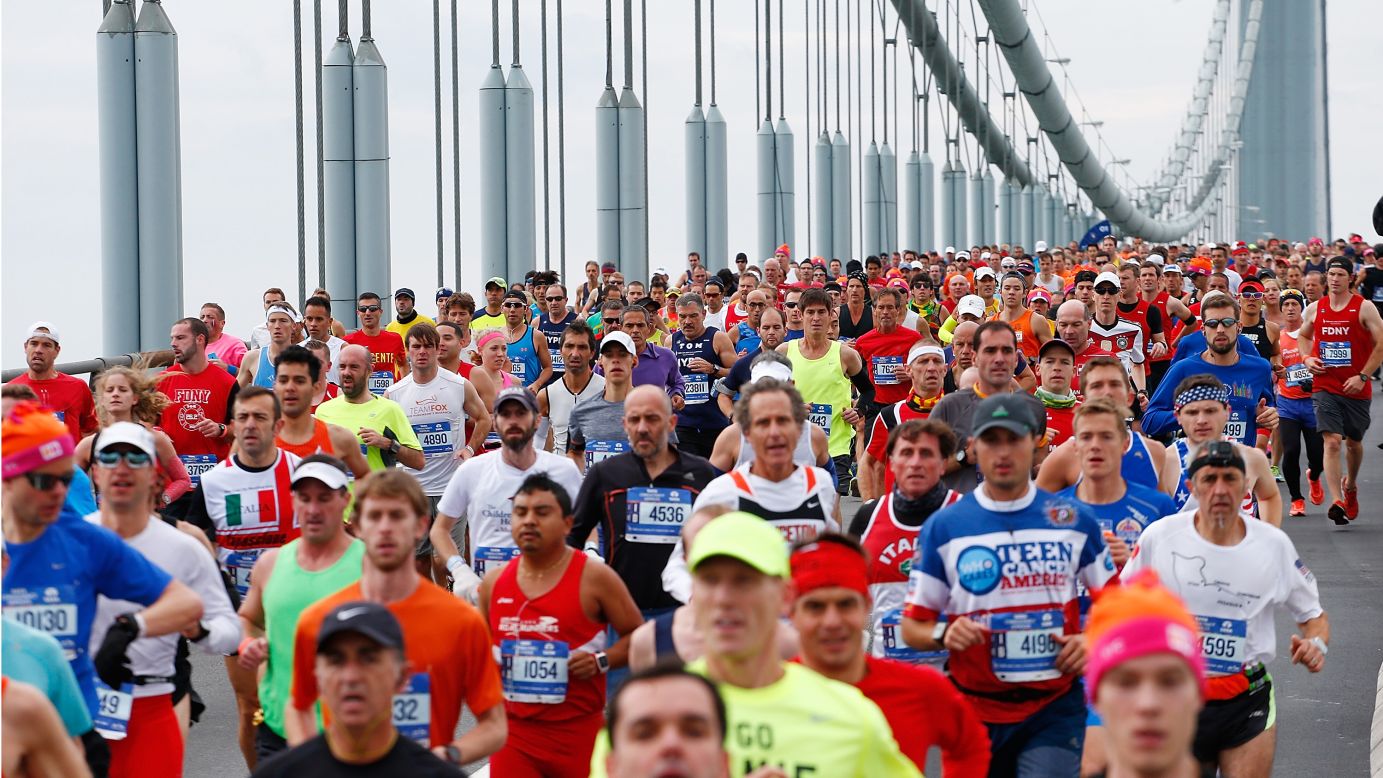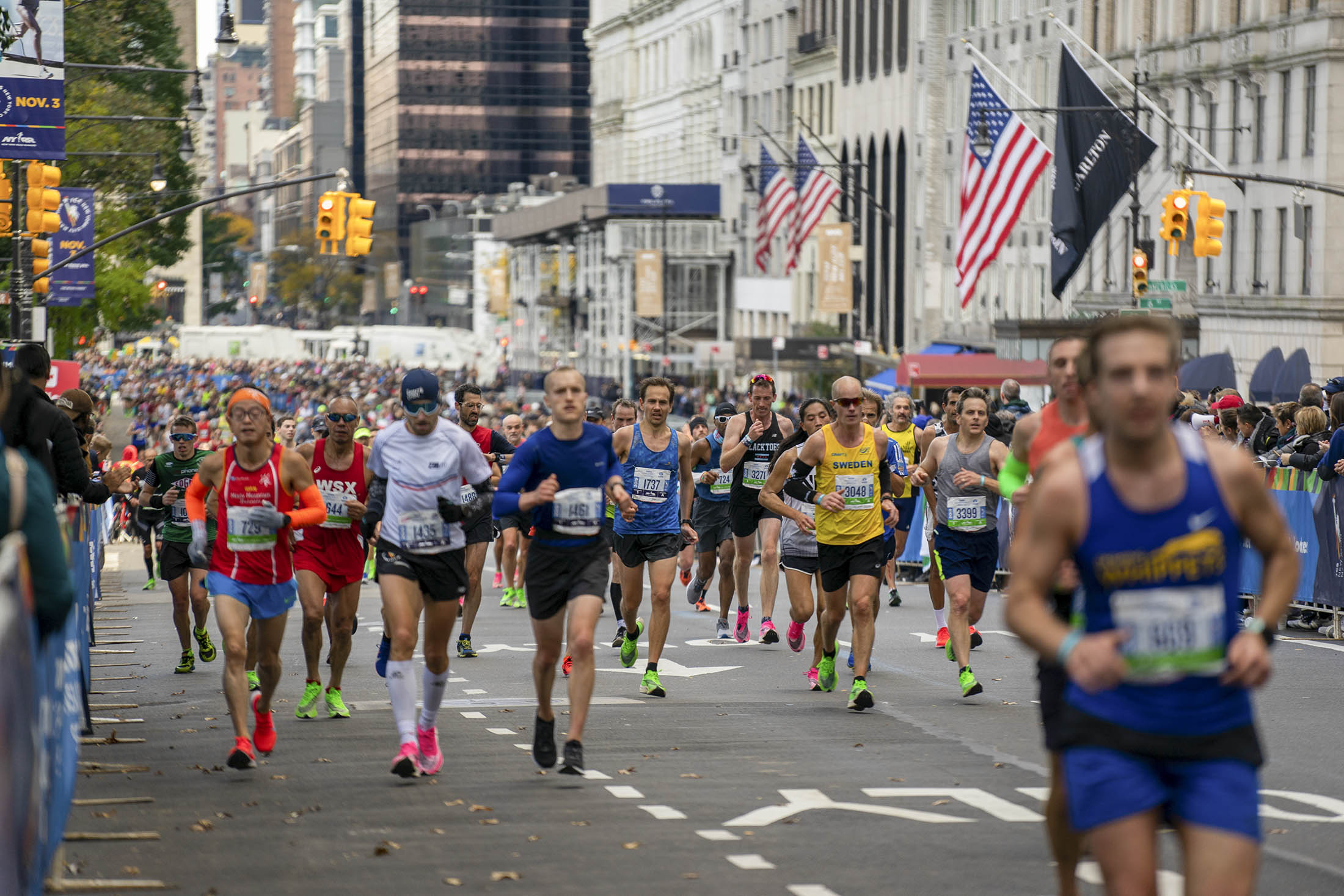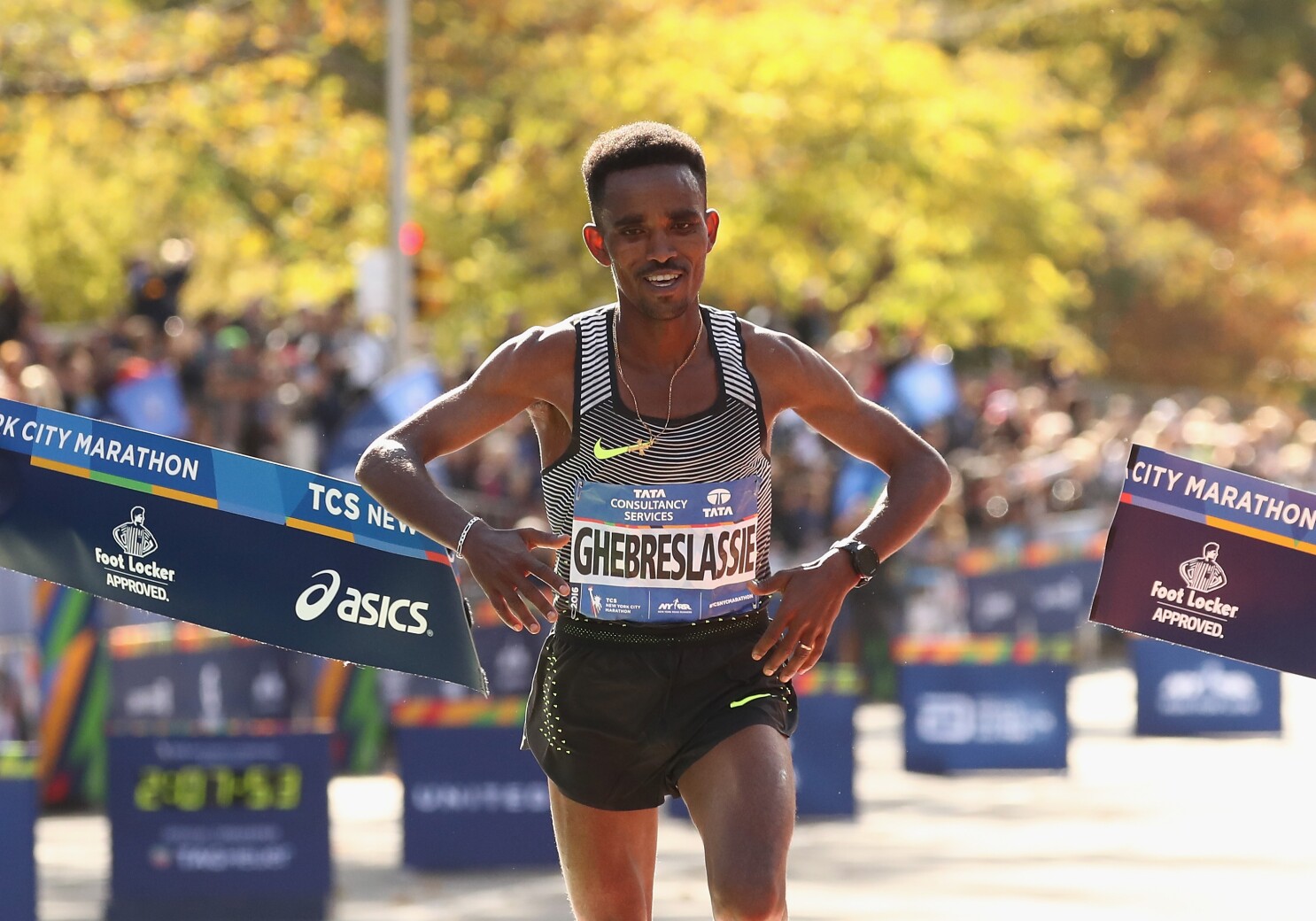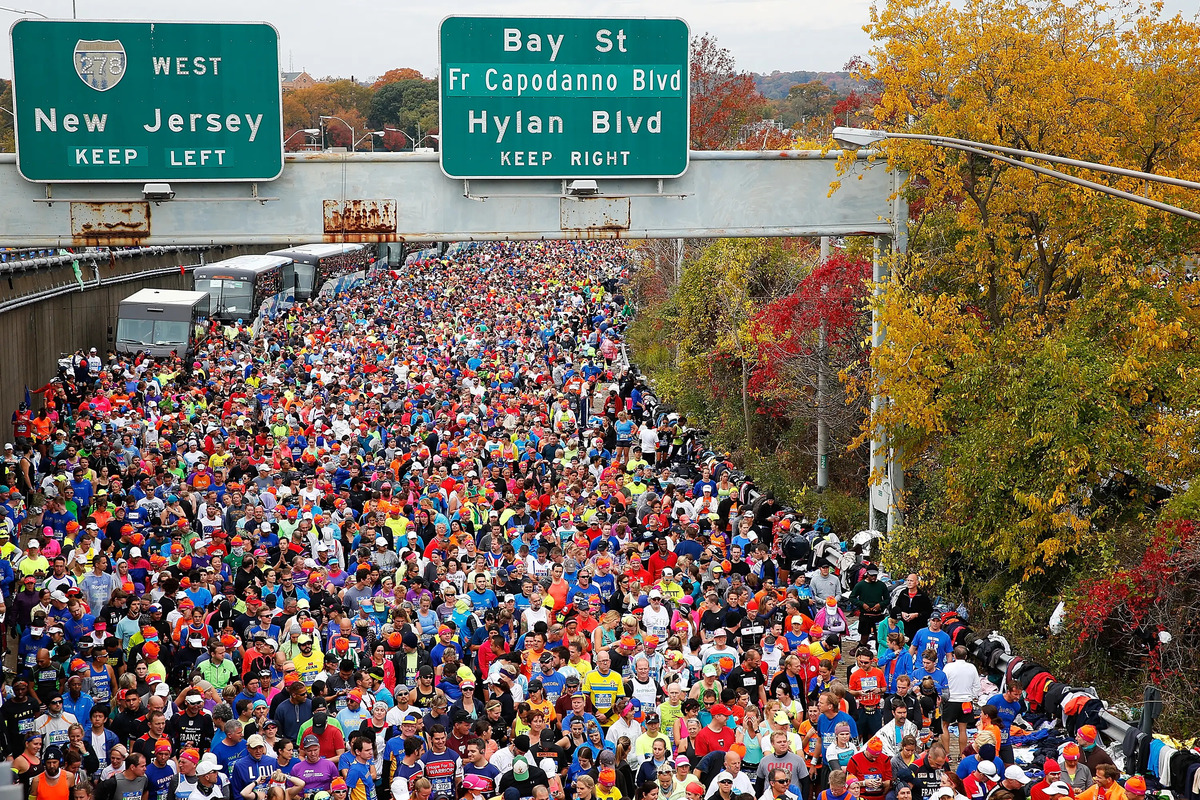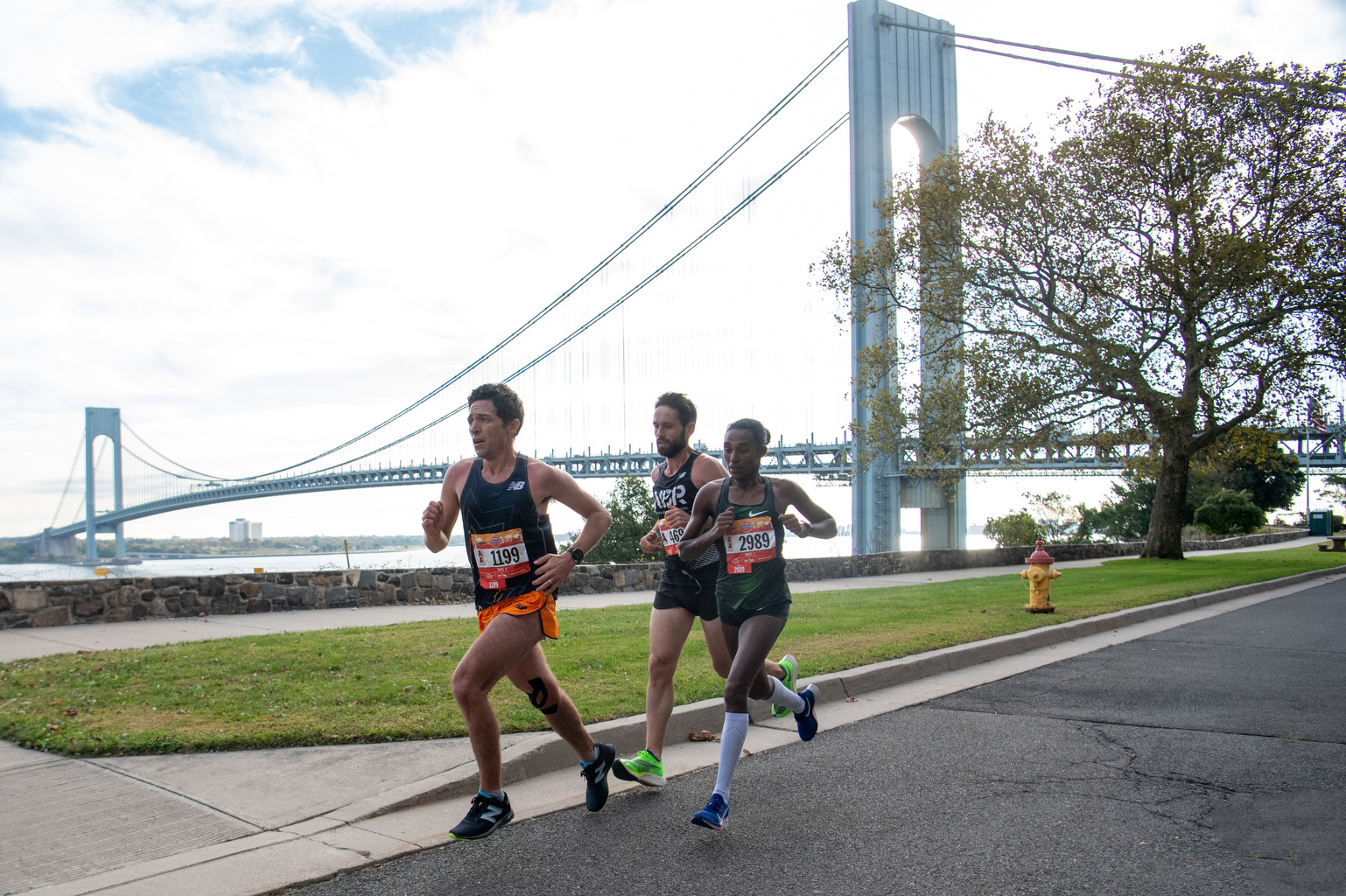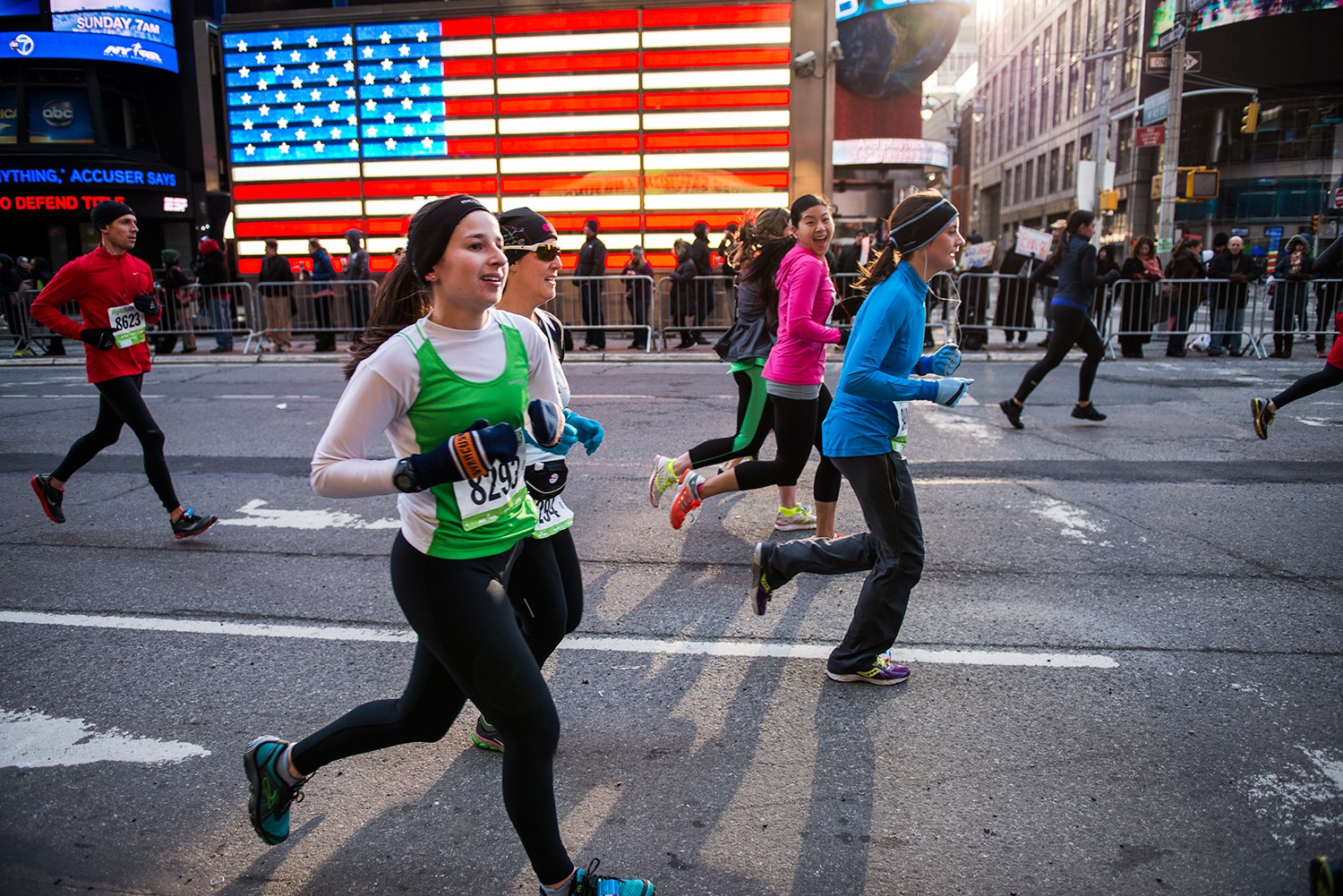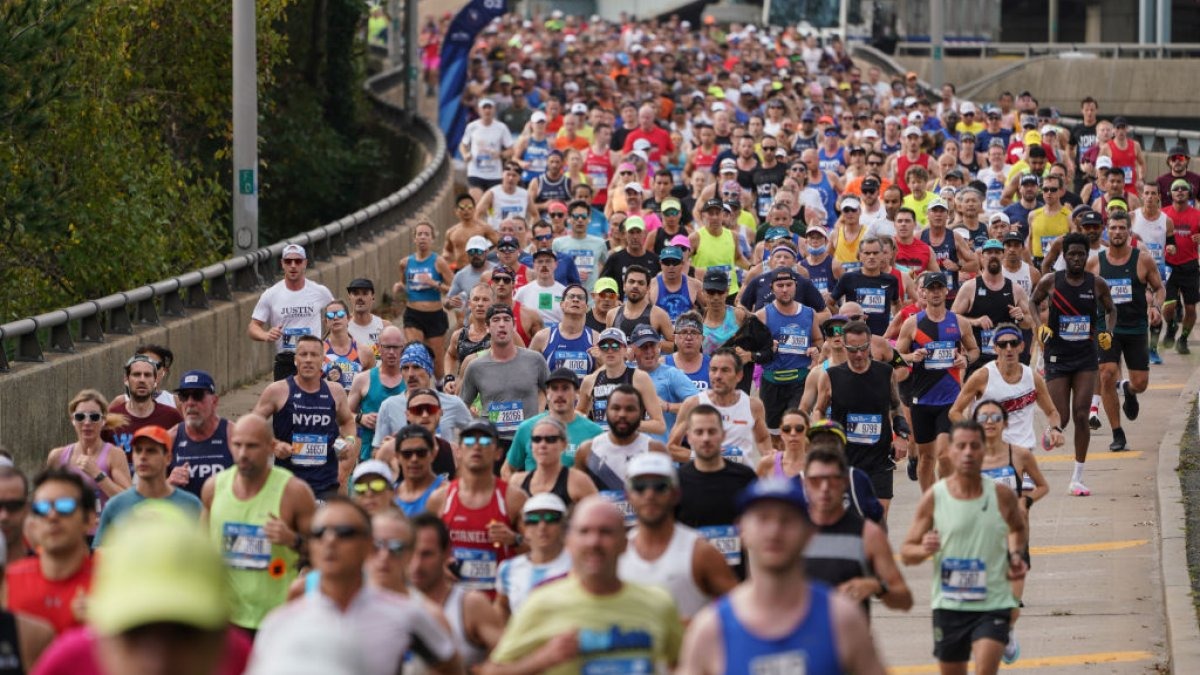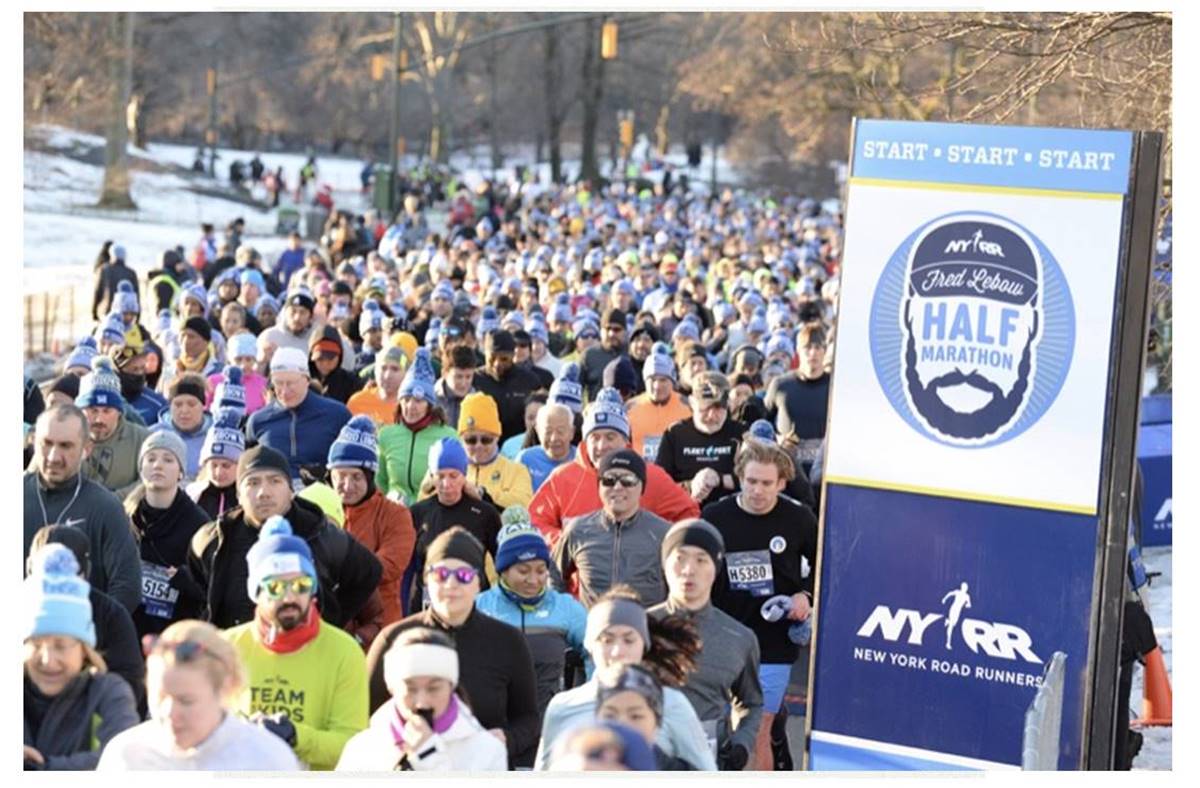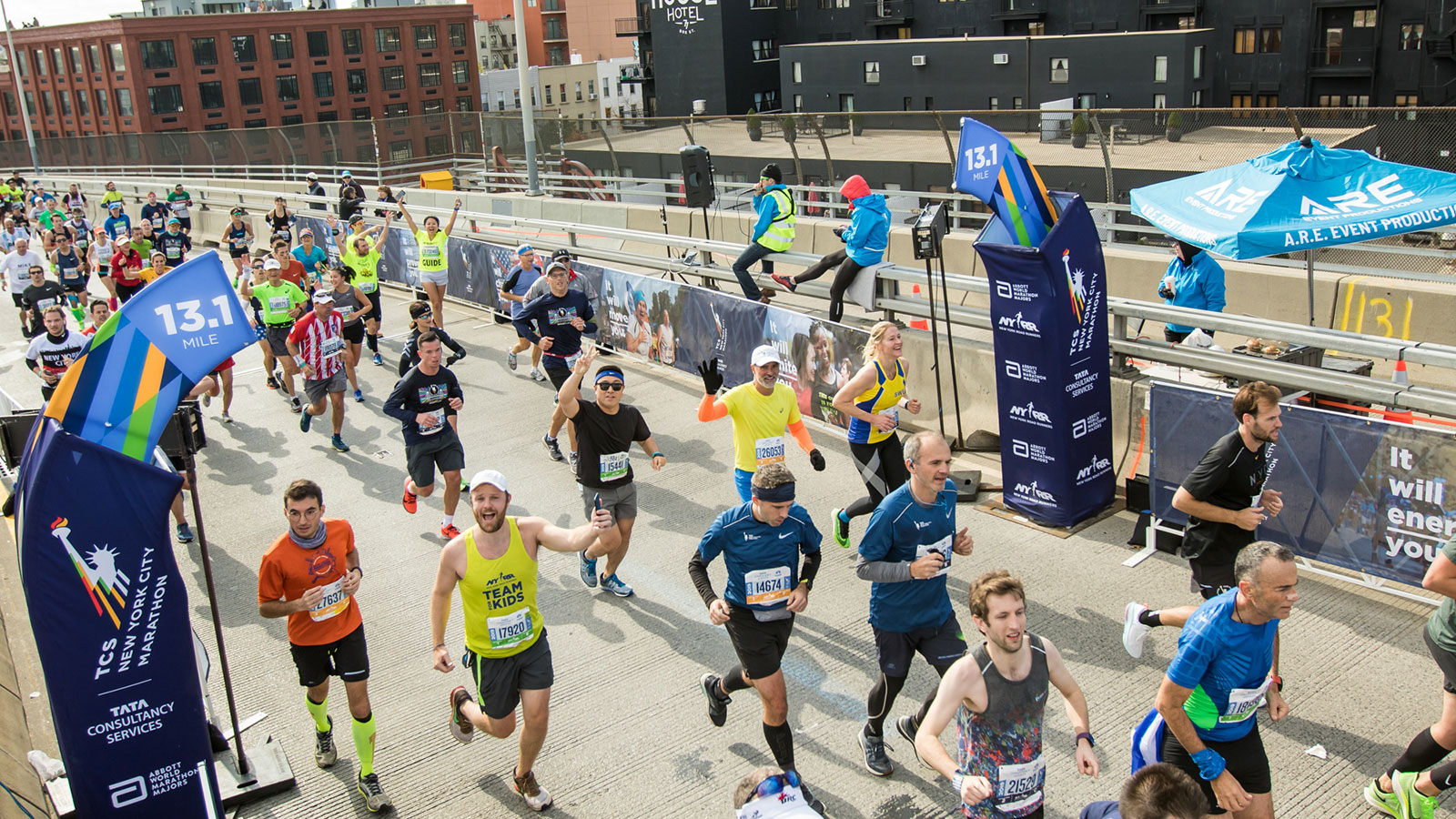

Featured
What Is The New York Marathon
Modified: January 22, 2024
Discover what the New York Marathon has to offer with our featured guide, including top tips and must-see attractions.
Introduction
The New York Marathon is one of the most prestigious and iconic marathons in the world. Held annually on the first Sunday of November, this legendary race attracts thousands of runners from around the globe. The event takes place through the bustling streets of New York City, capturing the heart and spirit of the city itself.
With a rich history dating back to 1970, the New York Marathon has grown from a humble race with just 127 participants to a world-renowned event that sees over 50,000 runners crossing the finish line each year. It has become an emblem of athleticism, determination, and community.
As one of the six World Marathon Majors, along with Boston, London, Berlin, Chicago, and Tokyo, the New York Marathon offers an unparalleled experience for both elite athletes and everyday runners. The race not only challenges participants physically but also provides a unique opportunity to discover the diverse neighborhoods and landmarks of the city that never sleeps.
In this article, we will delve deeper into the history, course route, participants, race day experience, winners and records, as well as the impact and legacy of the New York Marathon. So, lace up your running shoes and join us on an exciting journey through one of the world’s most beloved marathons.
History of the New York Marathon
The origins of the New York Marathon can be traced back to 1970, when a small group of runners led by Fred Lebow organized the first race. With only 127 participants, the inaugural marathon consisted of several laps around Central Park. Over the years, the race grew in popularity and size, eventually expanding beyond the park’s boundaries.
In 1976, the race underwent a significant transformation as it embraced a new course that would become its iconic route. The marathon now starts in Staten Island, travels through the five boroughs of New York City, and finishes in the world-famous Central Park. This unique course highlights the city’s landmarks, including the Verrazzano-Narrows Bridge, Brooklyn Bridge, and Times Square, offering runners a breathtaking and unforgettable experience.
The New York Marathon has witnessed many historical moments throughout its history. In 1974, the race allowed women to officially compete, making it one of the first major marathons to do so. The following year, Kathrine Switzer became the first woman to run with an official race number, breaking gender barriers and paving the way for equality in the sport.
Throughout the decades, the New York Marathon has garnered international recognition and attracted top marathoners from around the world. It has also become a symbol of resilience and unity, especially at times of hardship. In 2001, shortly after the September 11 attacks, the marathon was held as scheduled, sending a powerful message of strength and solidarity to the city and the world.
Today, the New York Marathon continues to be one of the most sought-after marathons for runners of all abilities. Its rich history, captivating course, and vibrant atmosphere have transformed it into an event that not only showcases athletic excellence but also celebrates the diverse spirit and unwavering determination of New York City.
Course Route and Distance
The New York Marathon boasts a challenging and scenic course that takes participants on a 26.2-mile journey through the five boroughs of New York City. The route showcases the city’s vibrant neighborhoods, iconic landmarks, and breathtaking views, making it a truly unforgettable experience for runners and spectators alike.
The race begins on Staten Island, where runners gather at the Verrazzano-Narrows Bridge. As the starting cannon fires, the marathoners embark on their epic journey, traversing the bridge and enjoying sweeping views of the New York Harbor.
Once in Brooklyn, the course weaves through diverse neighborhoods, including Bay Ridge, Sunset Park, Williamsburg, and Bedford-Stuyvesant. The cheering crowds and spirited atmosphere help fuel the runners as they cover the first half of the marathon.
The course then leads into Queens, passing by the famous Pulaski Bridge and through Long Island City, where runners can take in the stunning views of the Manhattan skyline. Next, it’s onto the Queensboro Bridge, a challenging uphill stretch that separates Queens from Manhattan.
As runners descend from the bridge, they enter Manhattan’s iconic borough. The course takes them through First Avenue, known for its electrifying energy and enthusiastic spectators. The roar of the crowd propels the participants as they head towards the heart of the city.
After reaching the Upper East Side, the course turns into the Bronx, where runners cross the Madison Avenue Bridge and soak in the lively atmosphere. As they make their way back into Manhattan via the Willis Avenue Bridge, the finish line begins to feel within reach.
The final leg of the race brings the runners back into Manhattan, crossing the Fifth Avenue and Central Park South. Finally, with the finish line in sight, participants enter Central Park and complete their journey amidst a wave of cheers and emotions.
The New York Marathon’s course is not only known for its scenic beauty but also its challenging nature. With both uphill and downhill sections, as well as various bridges, the route tests the endurance and strength of the participants.
The official distance of the New York Marathon is 26.2 miles, the standard distance for marathons worldwide. This iconic distance pays homage to the legendary ancient Greek soldier Pheidippides, who is said to have run from the city of Marathon to Athens to deliver news of a military victory.
The New York Marathon course and distance combine to create a legendary and sought-after race that challenges and inspires runners from all walks of life.
Participants and Registration
The New York Marathon attracts participants from all around the world, including professional athletes, amateur runners, and charity fundraisers. The race has a limited number of spots available, and gaining entry requires either meeting certain qualifying criteria or participating through charity fundraising or lottery selection.
For elite athletes and professional runners, the New York Marathon provides an opportunity to compete against some of the best in the world. These athletes must meet specific performance standards to qualify for a guaranteed entry. The race also invites a select group of international athletes based on their previous marathon performances.
However, most participants enter through the general lottery system. Anyone interested in running the New York Marathon can submit an entry during the designated registration period. The lottery selection process is based on chance, and those chosen will secure a place in the race.
Charity runners play a significant role in the New York Marathon. They commit to fundraising a specific amount of money for an official race charity partner. This not only gives runners the opportunity to secure an entry into the race but also allows them to contribute to a meaningful cause.
In addition to the main marathon, the New York Road Runners (NYRR), the organization behind the race, also hosts several other events during marathon weekend. These events include the Abbott Dash to the Finish Line 5K, where participants can run a shorter distance in the heart of Manhattan, as well as various youth races to promote fitness and wellness among children and teenagers.
Registration for the New York Marathon typically opens several months prior to the race day and fills up quickly due to its popularity. It is advisable for participants to monitor the official NYRR website for important dates and registration details to ensure they have the best chance of securing a spot in this iconic race.
Regardless of how participants gain entry, the New York Marathon offers an incredible opportunity to be part of a historic and inclusive event that celebrates the spirit of running and brings people from all walks of life together.
Race Day Experience
The New York Marathon is not just a race; it is a celebration of human endurance, community support, and the vibrant spirit of New York City. The race day experience is filled with excitement, anticipation, and a sense of camaraderie among the participants and spectators.
The race typically starts in the early morning hours, with runners arriving at the designated starting area well in advance. The atmosphere is electric, with thousands of participants from all corners of the world, adorned in their colorful running gear, warming up and mentally preparing for the grueling challenge ahead.
As the starting time approaches, runners are organized into different wave and corral assignments based on their estimated finish times. The sound of the starting cannon marks the beginning of the journey, as runners cross the starting line one by one, embarking on their personal quests to conquer the 26.2-mile course.
Throughout the race, runners are cheered on by enthusiastic spectators who line the streets, offering words of encouragement, high-fives, and even homemade signs of support. Neighborhoods along the course come alive with music, cheering squads, and local bands, creating an incredible atmosphere that energizes the runners and motivates them to push through.
Hydration and fuel stations are strategically placed at regular intervals along the course, providing runners with water, sports drinks, and snacks to keep their energy levels up. Medical personnel and volunteers are also on hand to provide support and assistance, ensuring the well-being of the participants throughout the race.
For many runners, reaching the iconic landmarks along the course is a significant milestone. The breathtaking views from the Verrazzano-Narrows Bridge, the thrill of running through Times Square, and the final stretch through Central Park all contribute to the unique race day experience, leaving runners with lifelong memories.
As participants approach the finish line, the cheering intensifies, and a surge of emotions fills the air. Crossing the finish line, whether achieving a personal best time or simply completing the marathon, is a moment of triumph and immense satisfaction.
Afterwards, runners receive their well-deserved finisher’s medal and are reunited with friends, family, and fellow runners. The post-race celebration involves sharing stories, showcasing hard-earned medals, and relishing in the accomplishment of completing one of the world’s most iconic marathons.
The New York Marathon is not just about the individual runner; it is a testament to human resilience, determination, and the power of community. The race day experience is a reminder that through hard work, support, and a shared passion, incredible achievements can be accomplished.
Winners and Records
Throughout its storied history, the New York Marathon has seen numerous impressive performances and record-breaking achievements. Each year, elite athletes from around the world compete for the coveted titles and strive to set new records on the challenging course.
In the men’s division, one of the most notable records was set by Geoffrey Mutai of Kenya in 2011. Mutai blazed through the streets of New York, finishing with a remarkable time of 2 hours, 5 minutes, and 6 seconds. His performance shattered the previous course record and remains one of the fastest marathon times in history.
In the women’s division, the New York Marathon has also witnessed remarkable achievements. The record for the fastest women’s finish is held by Margaret Okayo of Kenya, who completed the course in an impressive time of 2 hours, 22 minutes, and 31 seconds back in 2003.
The New York Marathon is also known for its close and thrilling finishes. In 1994, German runner Uta Pippig narrowly defeated Lorraine Moller of New Zealand, crossing the finish line just three seconds ahead. This fierce competition showcased the intense battles that can occur in this iconic race.
One of the most inspiring stories in the history of the New York Marathon is the 2009 race, when American runner Meb Keflezighi became the first U.S. male champion in 27 years. His victory electrified the crowd and cemented his place in marathon history.
The New York Marathon also recognizes wheelchair athletes who compete in their own division. Swiss athlete Marcel Hug holds the record for the fastest men’s wheelchair time, clocking in at 1 hour, 18 minutes, and 4 seconds in 2016. In the women’s division, American Tatyana McFadden set the record in 2015 with a time of 1 hour, 43 minutes, and 4 seconds.
While records and winning times are celebrated, the New York Marathon is about more than just individual victories. The race brings together individuals of all abilities and backgrounds, creating a sense of unity and a shared love for the sport of running.
As the race continues to evolve, new records may be set, and the spirit of competition will remain strong. Winners and record holders inspire future generations of runners and showcase the incredible feats that can be accomplished at the New York Marathon.
Impact and Legacy
The New York Marathon has left a lasting impact on the running community and the city of New York. Beyond being a world-class athletic event, the marathon has become an integral part of the city’s identity and a symbol of resilience, unity, and human accomplishment.
One of the major impacts of the New York Marathon is its economic contribution to the city. The race attracts thousands of international and domestic visitors each year, filling hotels, restaurants, and local businesses. It generates significant revenue for the city and has become a significant driver of tourism and economic growth.
Moreover, the marathon has made a profound impact on the lives of individuals and communities. It serves as a platform for charitable fundraising, allowing participants to make a difference in the lives of others while pursuing their own running goals. Over the years, millions of dollars have been raised for various charitable organizations, addressing critical social issues and supporting numerous causes.
The New York Marathon also promotes health and fitness, inspiring people of all ages to adopt an active and healthy lifestyle. It encourages individuals to set goals, train diligently, and work towards achieving personal milestones. The marathon’s emphasis on physical well-being has had a positive influence on the overall health of participants and the broader community.
Furthermore, the race has a powerful unifying effect, bringing together people from diverse backgrounds and cultures. On race day, the streets are lined with spectators cheering for all runners, regardless of their nationality or ability. The shared experience of the New York Marathon fosters a sense of camaraderie and reinforces the idea that we are all connected in our pursuit of personal and collective triumphs.
The New York Marathon’s legacy extends beyond its impact on individuals and the local economy. It has served as a catalyst for the growth and popularity of marathoning worldwide. Since its inception, the race has inspired countless marathon events in cities around the globe, fostering a true global running culture and community.
Moreover, the New York Marathon has played a significant role in advancing the sport of running. It has helped to push the boundaries of human endurance, with elite athletes constantly striving to set new records and achieve new heights. It has become a platform for innovation in training techniques, equipment, and race strategies, shaping the future of marathon running.
As the New York Marathon continues to evolve, its impact and legacy will remain ingrained in the hearts of past, present, and future participants. It will continue to inspire individuals to push their limits, come together as a community, and embrace the transformative power of running.
Conclusion
The New York Marathon holds a special place in the hearts of runners and spectators around the world. With its rich history, challenging course, diverse participants, and vibrant race day experience, it has become an iconic event that embodies the spirit and energy of New York City.
From humble beginnings to becoming one of the six World Marathon Majors, the New York Marathon has grown in prestige and popularity over the years. It has celebrated countless triumphs, showcased incredible athleticism, and united people from all walks of life for a common purpose.
But the impact of the New York Marathon goes far beyond the race itself. It has contributed to the city’s economy, generated funds for charitable causes, and promoted a culture of health and fitness. It has left a lasting legacy in the realm of long-distance running, inspiring others to take on the challenge of the marathon and push the limits of human potential.
Furthermore, the New York Marathon exemplifies the power of community and the unifying nature of sport. It brings together people from diverse backgrounds, nationalities, and abilities, creating a sense of unity and a shared pursuit of personal and collective achievement.
As the race continues to evolve, the New York Marathon will undoubtedly leave an indelible mark on the running world and the city of New York. It will inspire future generations to lace up their running shoes, chase their dreams, and experience the thrill of crossing that iconic finish line in Central Park.
Whether participating as an elite athlete, a charity runner, or a recreational runner, the New York Marathon offers a life-changing experience that transcends the boundaries of the race itself. It is a celebration of the human spirit, resilience, and the pursuit of greatness.
So, as the starting cannon fires and the runners embark on their 26.2-mile journey through the five boroughs, the world watches in awe and anticipation. The New York Marathon continues to captivate us all, reminding us of the incredible feats that can be accomplished when we push ourselves to the limits and embrace the power of community and determination.
